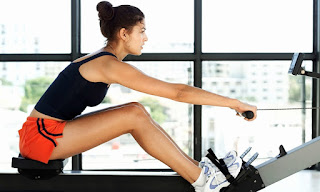10 Awesome Indoor Workouts to Try This Winter!

Don't let the cold weather and snow be an excuse not to workout! Try these awesome indoor workouts this year. 1.) Spin it Out While riding a bike outside in the winter may not sound ideal, spin classes are a great way to get your cardio workout indoors! 2.) Lap it Up Swimming laps is a great way to boost your cardio this winter! This is a fantastic low-impact exercise that's easy on the joints, but great at building strong muscles! 3.) Lace Up Ice skating at a moderate pace for an hour can burn up to 500 calories! Ice skating also helps your stabilizing muscles. 4.) Climb Rock climbing can provide a great non-traditional cardio workout! Not only will you get your heart rate up, but you will also be building arm, shoulder, back and leg muscles! 5.) Martial Arts Martial arts can not only provide a great cardio workout, but also improve your balance and coordination. Additionally, many martial arts are a great way to relieve stress and practice mindfulness! Try ...







